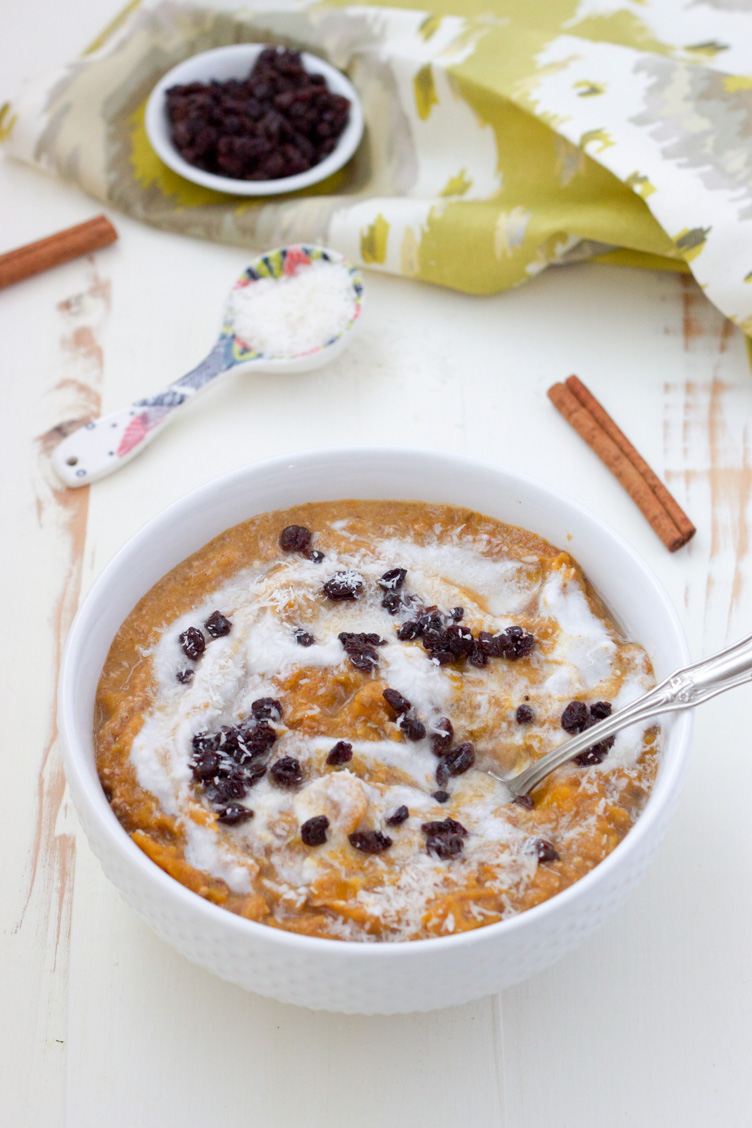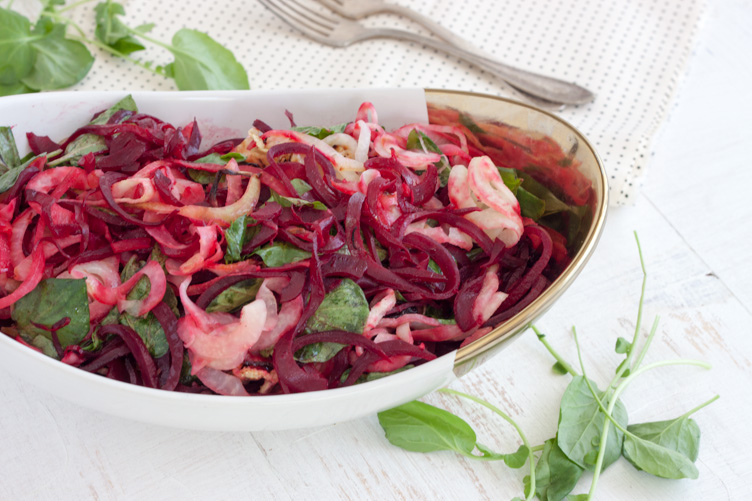RUBIES & RADISHES: WHAT IS PALEO?
Photo: Chris Parker
We’ve teamed up with Arsy Vartanian, founder of one of the top ten Paleo Blogs, Rubies and Radishes. She is the Author of two very successful cookbooks; The Paleo Slow Cooker and The Paleo Foodie Cookbook, and is here to help us learn more about this method of eating real food.
Arsy explains Paleo very simply. “It’s a lifestyle that aspires to achieve optimal health by following a diet based on what and how our Paleolithic ancestors ate. The current Paleo movement uses our ancestors as a starting point, but leverages modern science to expand from there. Essentially, it is a diet focused on consuming whole, natural foods, such as meats, eggs, vegetables, fruits, nuts and healthy fats. All you have to do really is eliminate the top three food toxins – gluten, industrial/vegetable oils and sugar!”
Seems so simple, right!? There are so many interesting things to learn about Paleo, it may seem overwhelming at times. With the help of Arsy we are diving into a few topics that will help ease your mind through the learning process. Let’s find out how she has kept herself inspired and committed to this lifestyle for over five years now.
Where do we start?
For best results, I recommend starting with a Whole30 (which doesn't allow alcohol). But remember, it's a Whole30, not a Whole365. Most people experience such great benefits by following a strict 30 day approach and then they are really able to loosen the reigns after that. In the long run you want Paleo to be a sustainable way of eating, for some of us that means having occasional cocktails and fancy cheese!
You can see the program guidelines here: http://whole30.com/whole30-program-rules/
For someone that is thinking about converting or trying it out what are the top five tips for success you can give them?
1. Plan, plan, plan! This lifestyle requires eating fresh food. It can be overwhelming at times but once you get into the routine and make it part of your lifestyle it’s really easy to adapt to this. To be successful, it is very important to plan your meals ahead and have an idea of what you are going to eat for the week or at least the next few days. We all make the worst decisions when we are starving, rushed or on the go. Yes it takes time, but there’s something soothing and grounding about spending time focusing on taking care of yourself with good food for the week. Your body, mind and mood will appreciate the effort!
2. Cook in bulk – that’s why my first book was the Paleo Slow Cooker. It takes minimal prep, you can have meals for the rest of the week or freeze them for later. If you do a couple at the top of the week it’ll give you a variety too if you get sick of repeating foods daily.
3. Read labels. Never assume that something labeled “natural” or “organic” is healthy. Look for ingredients you don’t recognize as whole foods. If there are any ingredients you don’t recognize as food, then chances are you shouldn’t eat it.
4. Eat a satisfying meal before you go to parties so you don’t get tempted by unhealthy choices.
5. Check in: Take the time to remember why you are doing this, check in with yourself and be proud of the choices you have made. It is hard work transitioning to a real food diet.
What about dining out? Are you bound to home cooking for life??
It is completely possible to eat out and stick to your Paleo diet it just requires a little planning ahead.
Review the menu before you go. If you have an idea of what to order, you will be less tempted by the pasta and artisan pizza on the menu.
Ask questions. Gluten is one of the main things we avoid on a Paleo diet. Often things that will seem gluten-free on the menu may not be, as flour is used to thicken sauces or soy sauce is used to marinate the meat. I bet you didn’t know that the first ingredient in most soy sauce is wheat! Luckily Gluten free is also so popular now that a lot of restaurants are marking things as gluten free preemptively, but still safe to ask.
Substitute sides for more vegetables or salad.
Ask for olive oil and balsamic vinegar instead of salad dressing, which is usually loaded with sugar.
Don’t be hard on yourself and give yourself a little room to enjoy the food and the company.
What keeps you committed to this lifestyle?
The health benefits I have experienced have been tremendous. I can't imagine going back to feeling how I used to - lethargic and low energy. Now, I have the energy to run my own business, cook and develop recipes, take care of my toddler and enjoy our beautiful beach town. I have eaten this way for so long, that it's become a lifestyle. I don't think about it anymore. Our entire family eats Paleo and our toddler is really thriving on a diet based around real, whole foods.
What are some of the health benefits of Paleo?
There are so many! Many people try Paleo for weight loss, but find that what keeps them committed is the increased energy and focus that they experience. In addition, Paleo is an anti-inflammatory diet, so it works to reduce the risk of modern day diseases such as autoimmune conditions, diabetes and osteoporosis.
Can you elaborate on the three food toxins and how to watch out for them?
Gluten is a protein composite found in wheat and related grains, including barley and rye. Gluten, when it is not properly prepared (soaking, sprouting and fermenting), which it usually never is in our culture, can be really hard on the gut and digestive system. In addition, on the Paleo diet we remove all grains and legumes, at least initially. This means soy, corn, beans and peanuts (they are actually a legume not a nut).
Vegetable Oils and Industrial Seed Oil, include canola, corn, soybean, cottonseed oil and safflower oil. These oils are unnatural and heavily processed with chemical solvents and in addition they are very high in Omega-6 fatty acids, which we aim to reduce on a Paleo diet.
Processed sugar, this includes artificial sweeteners. In addition to the typical health concerns on excess sugar, many times processed sugars are made from GMO sugar beets or GMO corn. On a Paleo diet, we aim to eat high quality food with minimal processing. You can swap out the refined and processed sugars, for natural sweetners such as honey, 100% maple syrup and coconut sugar.
How much of California inspires you (i.e.location, local produce)?
Everything! I try my best to use all local produce and meat. We are so lucky in California, we have access to so much local food year round. In Santa Cruz there is an abundance of local farms. We get our meat, chicken, pork, veggies and fish all from local farmers, ranchers and fisherman. It feels really good to support local businesses and also know where my food is coming from.
What keeps you inspired in the kitchen?
Reading food magazines! Some of my favorites are Food & Wine and Bon Appétit Magazine. They always leave me with brainstorming new ideas and recipes to create.
What can we look forward to next week?
Some of my favorite Thanksgiving recipes and a special Pumpkin Muffin recipe I created just for this that I am so excited to share with you. It’s great for the holidays and so delicious.













